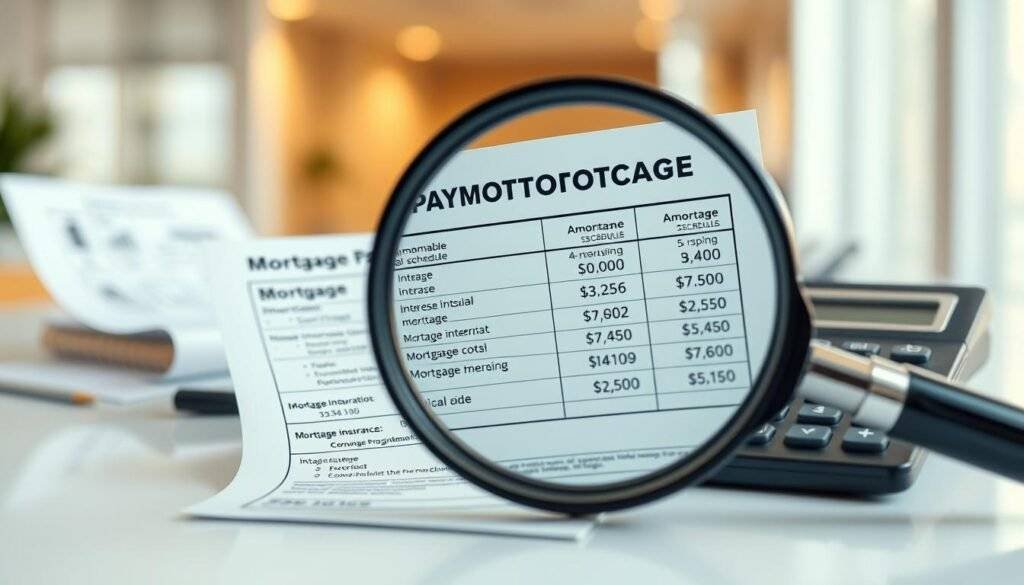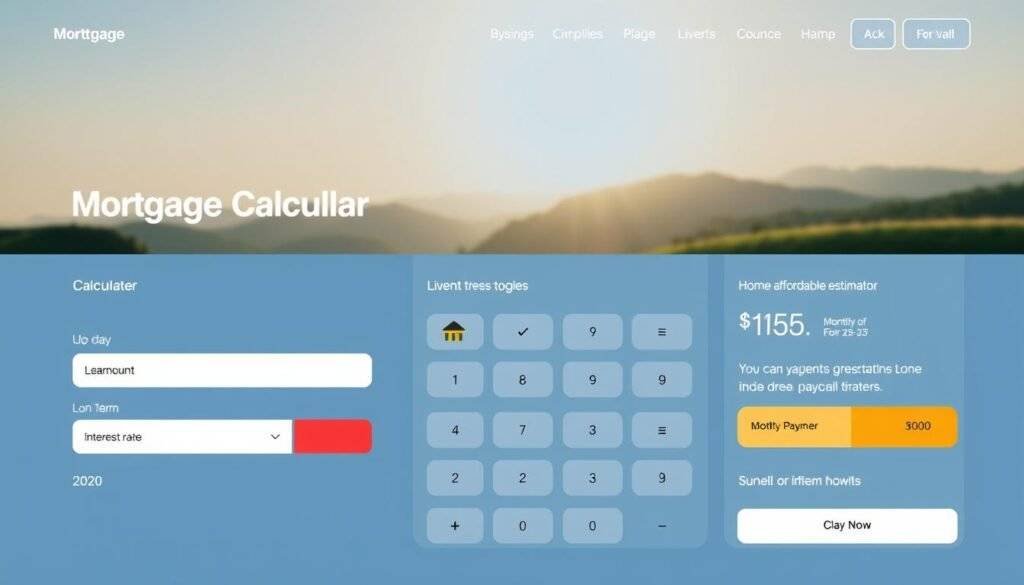Online Mortgage Calculator
Our online mortgage calculator is designed to help you estimate your monthly mortgage payments with ease. This tool is essential for potential homebuyers who want to understand their financial commitment before committing to a mortgage loan.
Accurate payment estimation is crucial in determining your affordable price range and making informed home buying decisions. Our calculator requires specific information to generate accurate results, including the loan amount, interest rate, and loan term.
The calculator accounts for various components that make up a complete mortgage payment, including principal, interest, property taxes, and insurance. By considering these factors, our calculator provides a comprehensive picture of your monthly payments.
Using our online mortgage calculator offers several benefits, including the ability to compare different loan terms and options, plan for extra payments, and understand the long-term financial commitment of a mortgage.
What sets our calculator apart is its inclusion of all relevant costs associated with homeownership, providing a more accurate estimate of your monthly payments. By using our online mortgage calculator, you can make more informed decisions about your home purchase and avoid potential financial pitfalls.
Understanding Mortgage Payments and What They Include
To manage your finances effectively, it’s essential to understand the components of your mortgage payment. A mortgage payment is not just about paying back the loan amount; it includes several other costs that are crucial for homeowners to understand.

Principal and Interest Explained
The principal is the actual amount borrowed from the lender to purchase a home. It’s the base amount on which interest is calculated. Interest is the cost of borrowing and is determined as a percentage of the principal. Understanding how principal and interest work together is fundamental to grasping your total mortgage cost.
Property Taxes and Insurance Costs
Property taxes are annual taxes on your home’s value, determined by local governments. They’re often collected monthly as part of your mortgage payment through an escrow account. Homeowners insurance, on the other hand, covers damage to your home and is typically required by lenders. Both these costs are integral to your mortgage payment.
Mortgage Insurance and HOA Fees
If your down payment is less than 20%, you may be required to pay mortgage insurance, which protects the lender in case of default. Additionally, homeowners in condos or planned communities may have to pay Homeowners Association (HOA) fees, which cover maintenance and amenities.
The Complete Mortgage Payment Formula
The total monthly mortgage payment is calculated using a formula that includes principal, interest, property taxes, and insurance. The formula is: M = P [ i(1 + i)^n ] / [ (1 + i)^n – 1], where M is your monthly payment, P is the principal loan amount, i is the monthly interest rate, and n is the number of payments. Understanding this formula helps in planning your finances.
By breaking down the components of a mortgage payment, homeowners can better understand their financial obligations and make informed decisions about their mortgage.
- Principal and interest are the core components of a mortgage payment.
- Property taxes and homeowners insurance are additional costs factored into the monthly payment.
- Mortgage insurance and HOA fees may also be included, depending on the loan terms and property type.
How to Use Our Online Mortgage Calculator
Using our online mortgage calculator is a straightforward process that helps you understand your mortgage payments. To get the most out of it, follow our step-by-step guide.
Step-by-Step Guide to Entering Your Information
To start using our mortgage calculator, you’ll need to input some key information about your mortgage. First, enter your home price in the designated field. This should be the price of the home you’re buying or the current value of your home if you’re refinancing.
Next, input your down payment. You can enter this as either a dollar amount or a percentage of the home’s price. Then, specify your loan term. Common loan terms are 30, 20, 15, or 10 years. The loan term significantly affects your monthly payments and the total interest paid over the life of the loan.
After that, enter your interest rate. Our calculator defaults to the current average rate, but you can adjust this to reflect your specific situation. Finally, input your ZIP code to get a more accurate calculation that includes local property taxes. Once you’ve entered all this information, click “Update” to see your mortgage payment breakdown.
Interpreting the Results
After entering your information and clicking “Update,” our mortgage calculator will provide you with a detailed breakdown of your mortgage payments. This includes the principal amount, interest, property taxes, and insurance. Understanding this breakdown is crucial for managing your mortgage effectively.
For instance, you’ll see how much of your monthly payment goes towards the principal and how much towards interest.
Advanced Features and Options
Our mortgage calculator offers several advanced features to help you make more informed decisions. One of these features is the amortization schedule, which shows how your payments are applied over time.
You can also use the extra payment feature to see how making additional payments can save you money on interest and help you pay off your loan sooner. Furthermore, you can adjust various factors to compare different mortgage scenarios, allowing you to find the best mortgage arrangement for your financial situation.
Benefits of Using a Mortgage Calculator for Home Buying Decisions
When considering purchasing a home, leveraging a mortgage calculator can help you make informed decisions about your financial future. Our mortgage calculator is designed to guide many of the decisions related to buying a home or refinancing your mortgage.
Determining Your Affordable Price Range
One of the primary benefits of using a mortgage calculator is determining your affordable price range. By inputting your income, existing debt, and down payment amount, you can get a clear picture of what you can afford. This helps prevent you from stretching your homebuying budget too far.
Comparing Different Loan Terms and Options
Our mortgage calculator allows you to compare different loan terms, such as 15, 20, or 30 years, to understand the trade-offs between monthly payment amounts and total interest costs. For instance, shorter-term loans come with lower interest rates but higher monthly payments.
Planning for Extra Payments and Early Payoff
You can also use the calculator to plan for extra payments and understand how they can impact your loan payoff and interest savings. Making additional payments can significantly reduce the term of your loan and the total interest paid.
Tracking Mortgage Insurance Removal
Furthermore, the calculator’s amortization schedule helps you track when you’ll reach 20% equity, the point at which you can request the removal of private mortgage insurance (PMI) on a conventional loan. This can lead to significant savings on your monthly mortgage payments.
As Forbes states, “Using a mortgage calculator can be a crucial step in the homebuying process, helping buyers understand the true cost of their mortgage.” This underscores the importance of utilizing such tools for informed decision-making.
| Loan Term | Monthly Payment | Total Interest Paid |
|---|---|---|
| 15 Years | $1,500 | $120,000 |
| 30 Years | $1,000 | $180,000 |

Strategies to Lower Your Monthly Mortgage Payment
To minimize your monthly mortgage expenses, consider implementing the following tactics. Lowering your monthly mortgage payment can significantly impact your financial stability and ability to save for other goals.
Making a Larger Down Payment
A larger down payment reduces the amount you need to borrow, resulting in lower monthly mortgage payments. Additionally, it can help you avoid private mortgage insurance (PMI), which adds to your monthly costs. For instance, on a $200,000 home, putting down 20% ($40,000) instead of 10% ($20,000) can save you hundreds of dollars annually on PMI.
Extending Your Loan Term
Extending your loan term from 15 to 30 years can significantly reduce your monthly payment amounts. However, this comes with the trade-off of paying more interest over the life of the loan. It’s essential to weigh the benefits of lower monthly payments against the total cost of the loan.
| Loan Term | Monthly Payment | Total Interest Paid |
|---|---|---|
| 15 Years | $1,479 | $66,364 |
| 30 Years | $1,073 | $143,739 |
Finding Lower Interest Rates
Improving your credit score, shopping among multiple lenders, and considering different loan types can help you find a lower interest rate. Even a small decrease in the interest rate can result in substantial savings over the life of the loan.
Eliminating Private Mortgage Insurance
Once your equity in the home reaches 20%, you can request to have PMI removed, potentially reducing your monthly payments by $100 or more, depending on your loan amount.
Refinancing Your Mortgage
Refinancing your mortgage to a lower interest rate can significantly reduce your monthly payments. It’s crucial to compare current rates with your existing mortgage rate to determine potential savings.

By using our mortgage calculator, you can quantify the savings from each of these strategies and determine which approach offers the best value for your situation. Combining multiple strategies can lead to maximum payment reduction while balancing short-term savings with long-term financial goals.
Next Steps After Using the Mortgage Calculator
Now that you’ve calculated your mortgage payments, it’s time to take the next steps towards homeownership. Getting pre-approved for a loan is a crucial step that confirms your budget and strengthens your position as a buyer. This pre-approval process involves contacting multiple lenders to compare mortgage rates and terms, potentially saving thousands over the life of the loan.
In addition to your down payment, it’s essential to save for closing costs, which typically range from 2-5% of the loan amount. Preparing for the home buying process also includes assembling necessary financial documents and understanding the mortgage application timeline. You should also factor in additional homeownership costs not included in the mortgage payment, such as maintenance, utilities, and potential HOA fees.
Maintaining an emergency fund for unexpected home repairs and other financial challenges is vital after making a home purchase. If you’re not ready to buy immediately, monitoring interest rates can help you time your purchase when rates are favorable. First-time homebuyers can explore programs that offer down payment assistance or favorable loan terms.
When working with real estate agents, use the calculator results to stay within your budget during the home shopping process. By following these steps, you’ll be well-prepared for the home buying process and can make informed decisions about your mortgage.
FAQ
What factors affect my monthly mortgage payment?
Your monthly mortgage payment is influenced by several factors, including the loan amount, interest rate, loan term, property taxes, and homeowners insurance. We also consider private mortgage insurance (PMI) if your down payment is less than 20%.
How do I determine my affordable price range for a home?
To determine your affordable price range, we recommend using our tool to calculate your monthly mortgage payment based on different loan amounts and interest rates. You should also consider your income, debts, and other financial obligations to ensure you’re not overextending yourself.
Can I lower my monthly mortgage payment by extending my loan term?
Yes, extending your loan term can lower your monthly mortgage payment, but it may increase the total interest paid over the life of the loan. We advise weighing the pros and cons before making a decision.
How does private mortgage insurance (PMI) affect my mortgage payments?
PMI is typically required for down payments less than 20%. It can increase your monthly mortgage payment, but it allows you to purchase a home with a lower upfront payment. We can help you understand how PMI affects your overall costs.
What is the difference between interest rate and APR?
The interest rate is the rate at which you borrow money to purchase your home, while the APR (Annual Percentage Rate) includes additional costs, such as origination fees and discount points. We help you understand the difference and how it impacts your mortgage payments.
Can I refinance my mortgage to lower my monthly payment?
Yes, refinancing your mortgage can help lower your monthly payment by securing a lower interest rate or extending your loan term. We can guide you through the refinancing process and help you determine if it’s right for you.
How do property taxes and homeowners insurance impact my mortgage payments?
Property taxes and homeowners insurance are typically included in your monthly mortgage payment and held in an escrow account. We help you understand how these costs are calculated and how they affect your overall mortgage payments.

